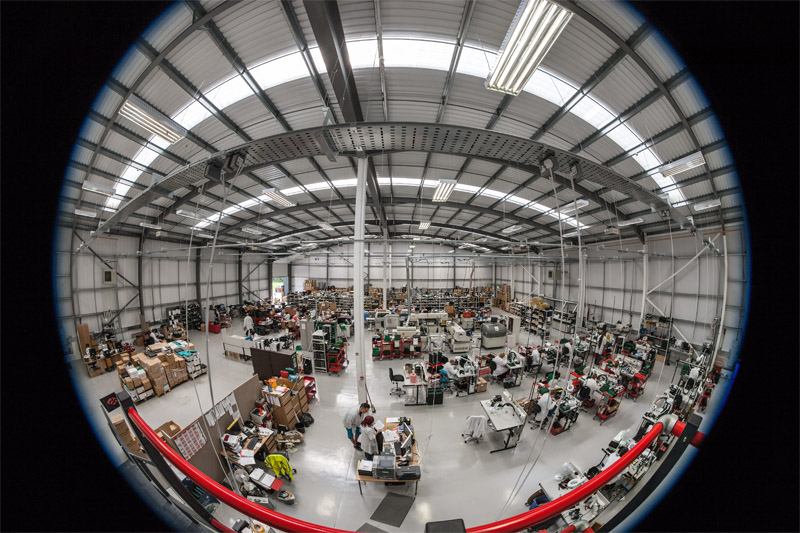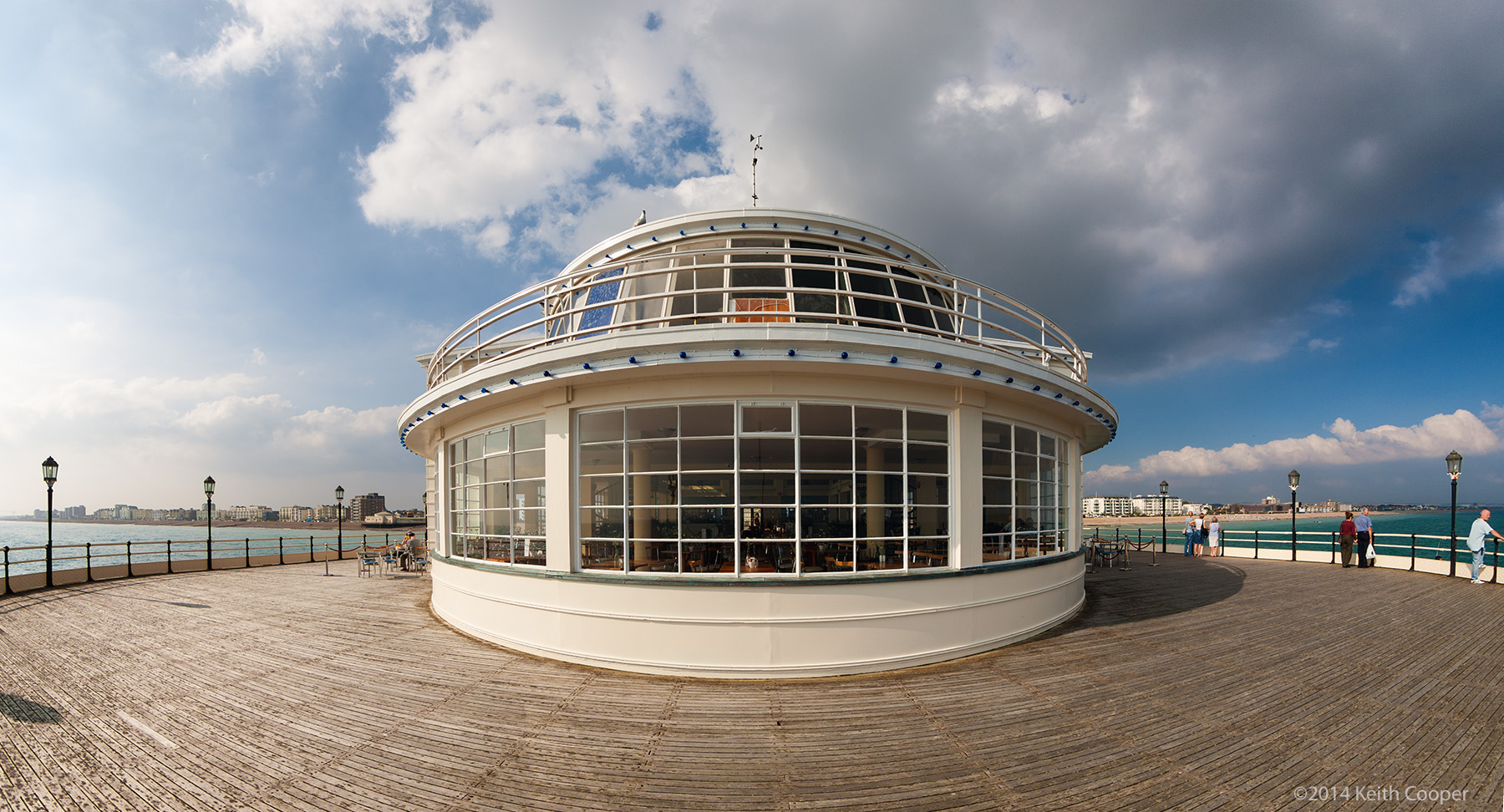Vertical Lines in wide views
The importance of vertical lines
Problems with vertical lines in extra wide views
The fish-eye lens is all too often seen as unsuitable for anything but ‘creative’ work. However,as I looked at in the circular views of ceilings post, an understanding of just how the lens maps the view in front of you to the image recorded, can enable some views of wide spaces that give a great impression of scale.

Fish-eye view of interior of factory
I regularly use a fish-eye lens that ranges from 8mm to 15mm focal length. At 8mm you get a full circle, whilst the view above is at around 10mm. That black area is not what most people want in one of our images (apart from the out and out circular ones).
Take for example, this view of a new factory unit, with a 15 mm focal length. The field of view is 180 degrees across the diagonal.

Correcting verticals
The view gives a great feel for the space, but the curved walls and vertical lines immediately make the image look distorted.
It so happens that we notice unusual tilts or bends of vertical lines much more readily than horizontal ones (normal perspective can change the tilt and size of horizontal lines, but just the size of vertical ones).
Applying a transform that straightens verticals results in an image that, whilst obviously showing a form of distortion, gives a much better ‘feel’ for the expansiveness of the space.

I’ve cropped the image a bit to better fit the view, but notice the difference in how you get a feel for the space, and the location (a balcony), where I’ve taken the shot from.
Representing a three dimensional view on a flat plane is a compromise, but you do have a fair bit of control over how the space ‘feels’ to the viewer.
One more example, showing the restaurant at the end of Worthing pier.
More information: I’ve a much more detailed review of the EF8-15 lens at Northlight Images



